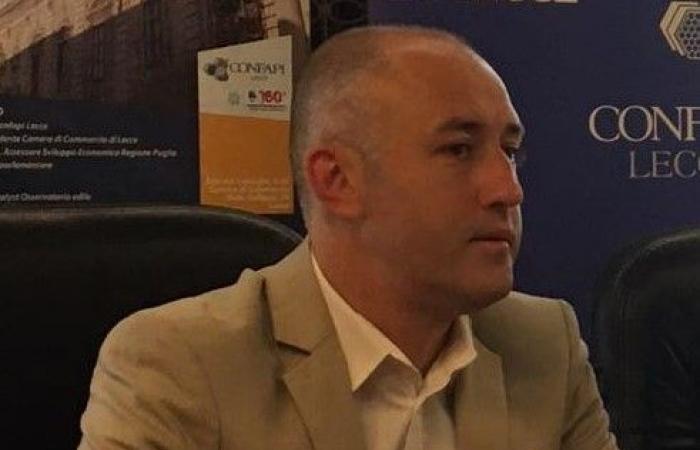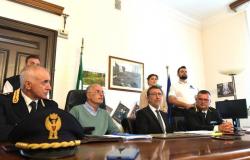
LECCE – In Lecce and its province, 146 million euros of Pnrr funds have been spent to redevelop villas and condominiums. The National Recovery and Resilience Plan (Pnrr) allocated a significant portion of resources to energy efficiency and building safety thanks to European taxpayers. The funds to refinance the Superbonus amount to almost 14 billion euros. Of these, 7.2 billion were invested in the recovery of condominiums and another 6.5 billion for independent homes.
This is what emerges from the new study conducted by the Aforisma economic observatory, directed by data analyst Davide Stasi.
In Salento, 98 million euros were spent to renovate 690 single-family buildings, for an average amount of 142,152 euros. Another 47.4 million were spent on 65 condominiums, for an average amount of 730,065 euros. The overall total amounts to 145,538,938 euros.
«The maxi-tax break of 110 percent – recalls Davide Stasi – was introduced to revive the economy from the pandemic triggered by covid-19. But it must be remembered that the redevelopment of the construction sector is an absolutely central issue in the context of our country’s ecological transition and the global fight against climate change, as well as representing a driving force for the economy, employment and technological innovation. , the evolution of our cities. Furthermore, it represents a response to housing hardship and the improvement of the population’s health status. But there is no shortage of excesses: in Racale 369,417 euros were spent on a single house; in Galatina 323,426; in Nardò 286,077; in Galatone 276,162; in Parabita 249,807; in Lecce 249,371; in Tuglie 239,340; in Galatina 238,111; in Seclì 234,051; in Ugento 232,232; the other interventions in decreasing order of expenditure. The bill for condominiums is much higher, given the greater number of real estate units. In Lecce there was one for which over three million euros were spent (3,103,560, to be precise); in another 2,905,187; in third place was one in Cavallino for 2,595,089 euros. It should be remembered, however, that buildings are essential to achieve carbon neutrality and the building stock is the largest energy consumer in Italy, representing 40 percent of energy consumption and 36 percent of its greenhouse gas emissions. greenhouse. The latest pandemic has led to greater attention from the European Union towards buildings. The package of measures to reduce greenhouse gas emissions by 55 percent by 2030 compared to 1990 levels has been called “Fit for 55 percent”. Among the measures identified to implement the new ambitious climate target is the revision of the directives on the promotion of energy from renewable sources («Red II»), on energy efficiency («Eed») and on the energy performance of buildings («Epbd»). In particular, the latter has as its main objectives the increase in the rate of renovation of existing buildings to be pursued through long-term national strategies. In Italy, legislative decree number 73 of 14 July 2020 transposed the Eed directive and legislative decree number 48 of 10 June 2020 that on energy performance in buildings”.
In Puglia, of the total of 682 million euros, approximately half (322.5 million euros) were spent on villas and the other (359.5 million) on condominiums. With 322.5 million euros, 2,210 independent houses were recovered, for an average amount of 145,928 euros and with the other 359.5 million, 531 condominiums were renovated, for an average amount of 677,024 euros. Throughout Italy, thanks to European funds, 46,922 villas and 13,833 condominiums have been modernized. The census of all the renovations financed thanks to the debt contracted with the European Union is reported in a long list of sworn statements reported by the Ministry of the Environment and Energy Security (Mase), in order to put the Superbonus construction sites under observation.
In Puglia, as of May 31st, there were 27,497 sworn practices. The total investments were 5.7 billion euros (5,676,121,603 euros) of which 5,639,396,205 were eligible for deduction. Investments for works already completed eligible for deduction, equal to 96.8 percent, amount to 5,457,810,501 euros. Therefore, there are 5,966,821,981 paid by the State for the construction sites completed in Puglia. The condominiums involved were 5,001 (95.4 percent of the works have already been completed) and represent 57 percent of the total investments allowed (3,197,228,414 euros).
Regarding single-family buildings, there are 18,173 certifications (98.6 percent of the works have already been carried out) and correspond to 35.7 percent of the permitted investments (2,015,301,023 euros). Then there are 4,323 functionally independent real estate units, i.e. those buildings that have at least three systems of exclusive ownership (including water, electricity, gas and winter air conditioning) and represent 7.6 percent of investments (426,866,769 EUR). At a regional level, as well as at a national level, the maxi relief is now suffering the effects of the government’s restrictions.
Sponsored Link





